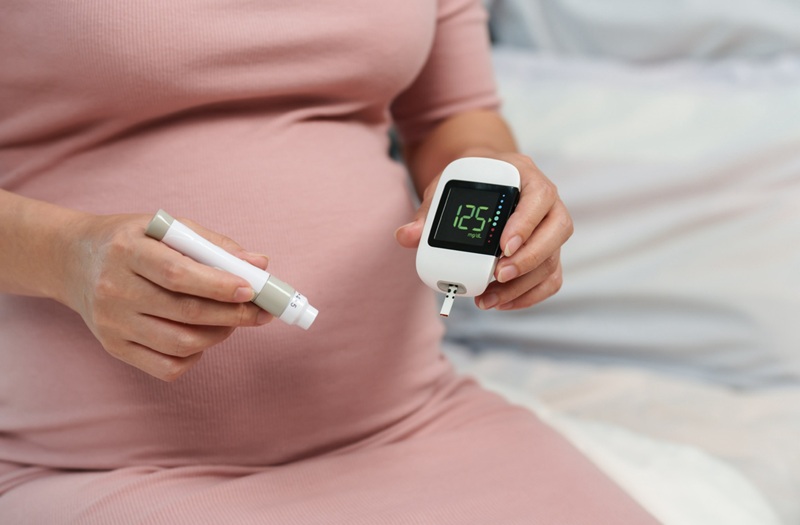Beyond The Scalpel: Robotic Surgery Innovates Fibroids, Endometriosis Treatment

Uterine fibroids and endometriosis can significantly impact women’s lives, but robotic surgery is revolutionising the treatments.
UTERINE fibroids and endometriosis are among the most common gynaecological conditions affecting women worldwide.
Despite their prevalence, these conditions are often misunderstood, leading to delayed diagnoses and insufficient treatment.
However, advances in medical technology, especially robotic surgery, are offering new hope for effective management.
Understanding uterine fibroids and endometriosis
Uterine fibroids are non-cancerous growths in the uterus that vary in size, number and location.
These benign tumours, composed of muscle and fibrous tissue, can develop within the uterine wall, outside the uterus, or inside the uterine cavity.
“It’s quite a common condition for women over 35 years of age, with about 30% affected. Most don’t experience symptoms unless the fibroid grows significantly,” explains Sunway Medical Centre Velocity’s (SMCV) consultant obstetrician and gynaecologist Dr Nor Elyana Noordin.

Dr Nor Elyana highlights that robotic surgery offers greater precision, reduced recovery times and improved outcomes.
The symptoms include heavy menstrual bleeding, pelvic pain, frequent urination, and, in some cases, infertility. Risk factors include hormonal imbalances, genetics and lifestyle factors.
Endometriosis occurs when tissue similar to the uterine lining grows outside the uterus, such as on the ovaries, fallopian tubes and surrounding pelvic tissues.
This misplaced tissue responds to the menstrual cycle, causing inflammation, scarring and pain.
“Symptoms include severe menstrual pain, chronic pelvic pain, painful intercourse and difficulty conceiving,” says Dr Nor Elyana.
Long-term risks include ovarian cancer, specifically clear cell carcinoma.
Conventional treatments
Both conditions are typically managed with medications, including hormonal therapies to control the symptoms and pain relievers. Surgical interventions include:
- Traditional open surgery, where an incision is made, either horizontally or vertically depending on the pathology, to expose the inside of the abdomen.
- Laparoscopy (keyhole surgery), where smaller incisions are made to fit surgical instruments used to remove the uterine fibroids, and in excision or ablation surgery for endometriosis.
Traditional surgeries, however, can be invasive, with long recovery periods and carrying risks like blood loss and complications.
Role of robotic surgery
Robotic surgery offers greater precision, reduced recovery times and improved outcomes, making it especially valuable for complex cases.
This involves the use of a robotic system controlled by a trained surgeon. It includes a console, robotic arms with specialised instruments, and a high-definition 3D camera.
The surgeon operates the system to perform precise and minimally-invasive procedures.
In fact, Dr Nor Elyana highlights a recent breakthrough in China, where a surgeon performed a robotic lung surgery remotely, demonstrating the potential of this technology.
Robotic surgery benefits
- Enhanced precision: A robotic surgical system offers unparalleled precision, allowing surgeons to navigate around delicate tissues and complex anatomical structures, crucial for treating conditions like endometriosis with lesions near vital organs.
- Improved visualisation: High-definition 3D imaging provides a magnified view, aiding accurate removal of fibroids and endometriosis tissue.
- Minimally invasive: Smaller incisions result in less scarring, reduced blood loss, and a lower risk of infection, compared to traditional open surgery.
- Faster recovery: Patients often experience shorter hospital stays and quicker returns to daily activities. The fastest Dr Nor Elyana has seen a patient recover is a week.
Addressing uterine fibroids
Robotic-assisted myomectomy is transforming fibroid treatment by allowing precise removal while preserving the uterus, which is ideal for women wishing to maintain fertility.
This approach is particularly effective for large or multiple fibroids.
In some countries like the United States, robotic surgery for simple procedures is performed as day-care surgery, where patients are discharged the same day.
In Malaysia, it is primarily used for complex cases, including gynaecological cancers.
Endometriosis procedure
This surgery often requires meticulous removal of endometrial implants and scar tissue.
Robotic-assisted surgery allows for a thorough removal of lesions, even in hard-to-reach areas.
The precision reduces recurrence risks and complications, especially when endometriosis affects sensitive structures, like the bowel or bladder.
Robotic4U Fund
While robotic surgery offers numerous advantages, it may not be accessible to all due to cost.

Cheow says the robotic4u Fund aims to ensure that cutting-edge medical treatments are within reach for everyone.
To address this, SMCV has launched the Robotic4U Fund, a corporate social responsibility initiative offering subsidised robotic surgery for eligible patients, including those from low-income groups or with limited insurance coverage. The fund is available for participating surgeons across various specialities until Dec 31.
“With SMCV’s Robotic Surgery Service and the introduction of the Robotic4U Fund, it represents a significant stride towards our vision of providing advanced healthcare solutions that are accessible to all,” says SMCV chief executive officer Susan Cheow.
“This initiative aims to ensure that cutting-edge medical treatments are within reach for everyone as every patient deserves the right to a better quality of life.”
Looking ahead
Uterine fibroids and endometriosis can significantly impact women’s lives, but robotic surgery is revolutionising the treatments.
“Robotics will become the future of surgery,” says Dr Nor Elyana.
Was this article helpful?
2 out of 3 found this helpful
Suggest to Read









